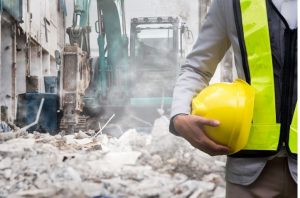It’s all about you: workplace tips you need to know
It’s a thing of the past when the workers were left at the mercy of their employers. Since the dawn of the 20th century, employees around the world have gained a lot throughout the years. Today, every business considers employees as an immensely important part. There are numerous laws in the modern world that protect workers’ rights and make sure they don’t become victims of any kind of discriminations, as well as ensuring their safety and well-being.
As an employee, you need to be aware of your rights, so you don’t get denied anything that is yours by law. Maybe you are already familiar with some of the following workers’ rights, and maybe some will come as a surprise to you. Either way, take a closer look and learn more about your privileges and working place rights.
1. Protection from harassment
Any kind of discrimination is forbidden in working place. This includes being forced dating anybody from the company, being given racial or gender-related comments or being bullied psychologically or physically. In case any of these types of discrimination happens to you, you should stand up for yourself and speak up, as is your right.
2. Minimum wage ensured
Every country has a limit of a minimum wage that must be provided to each and every employee in any company, without exceptions. Furthermore, overtime hours have to be paid even more by the hour. In short, no matter what company you are working in, your right to a minimum wage needs to be fulfilled. If that is not the case, you need to talk to your employer so as to correct the paycheck.
3. Using appropriate tools and machines – safety issues
Whenever you are using tools or machinery, make sure you follow safety procedures, as ignoring them can lead to serious injuries. It is your right to warn your supervisor if you are not properly trained to handle a certain tool or a machine. Another way of getting injured is not lofting or moving heavy items properly. You need to be provided with an appropriate tool if you are to handle heavy items. There should be a clear procedure for handling smaller and bigger items in the workplace.
In short, if you are working in dangerous conditions, you have the right to file a report in case the standards of safety have not been fulfilled and you feel your safety is endangered more than necessary.
4. Having an emergency and disaster plan
Eventually, something unexpected will occur and the company needs to be prepared for that. The emergency action plan is a must in every company, and it should include practicing fire drills, storm or earthquake drills, as well as teaching employees to keep water and snacks within their reach in case of a disaster. The first aid kit needs to be regularly updated, while the offices have to be insured. If you, as an employee, notice some of these points have not been covered, talk to your employer and make sure the emergency plan is solid and detailed, for your own safety and safety of others.
5. Family leave
Inform yourself on how many unpaid weeks per year you have the right to. In case you decide to stay at home after having a baby, it is your right to do it. Also, if a family member is suffering from a serious disease, it is also a time you can exercise your right for a family leave.
6. Workers’ compensation
In case of an injury at work, you are eligible for appropriate medical treatment, as well as compensation. For example, you can get hurt because of your employee’s fault or negligence. In this case, you have the right to come back to work once you are capable of work or get a similar job. If you have to move to another position because of the injury, you are entitled to the same level of pay and benefits as before. To be completely familiar with your rights after an injury, professionals like Withstand lawyers will help you understand and exercise your rights.
7. Having a safety task force
There is a possibility to gather several employees in the company to assemble a safety task force whose task would be reviewing safety standards and manuals, as well as focusing on keeping the offices safe. They can also talk to the staff about their worries and suggestions about how to improve safety at the office. In short, it means getting a direct input from those whose safety is at risk every day and coming up with a solution. This may not be obligatory in a company, but sure can be a recommendation for the future.
Final comment
Every worker needs to feel appreciated and safe in the workplace. Workers’ rights today are on a much higher level than a century ago but it still doesn’t mean that somebody’s rights are being violated. The way to make sure it doesn’t happen to you is to know exactly what your rights as an employee are.

Audrey Taylor was born in San Francisco, and moved to Adelaide at the age of five. Marketer researcher and social media manager on hold, full – time mommy of a cheerful two-year-old. Graduated from Queensford college, worked in a couple of marketing agencies across Australia, eager to learn more about business and share her experiences. Traveled across the Europe. Her hobbies include: home decor, fashion, travel, music, old movies.















